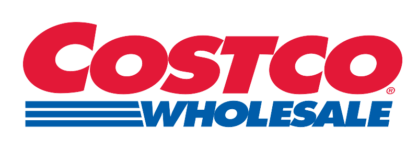Cocoa Butter

Overview
Inci name
The INCI name for Cocoa Butter is Theobroma Cacao (Cocoa) Seed Butter.
Packaging
Bulk Packaging Options for Cocoa Butter:
-
Bulk Bags: Cocoa butter can be packaged in large bulk bags, typically ranging from 25 to 50 pounds, ideal for manufacturers and large-scale users.
-
Drums: Available in 200-liter (approximately 52 gallons) drums, suitable for industrial applications and high-volume production needs.
-
Palletized Packaging: Cocoa butter can be shipped on pallets, allowing for efficient storage and transportation, often consisting
Shelf life
Cocoa butter has a shelf life of approximately 2 to 5 years when stored properly. The longevity is due to its stable fat composition, which is rich in antioxidants that help prevent rancidity. To maximize its shelf life, cocoa butter should be kept in a cool, dark, and dry place, ideally at temperatures around 50°F (10°C). Although cocoa butter is resistant to spoilage, it's essential to check for any signs of spoilage, such as changes in color, odor, or texture, especially if it has been stored for an extended period.
Storage
Storage Guidelines for Cocoa Butter
-
Temperature: Store cocoa butter in a cool, dark, and dry place, ideally at around 50°F (10°C). This temperature is slightly warmer than a standard refrigerator.
-
Container: Use an airtight container to prevent exposure to air, which can lead to oxidation and spoilage. A tightly sealed bucket or jar is recommended.
-
Avoid Moisture: Keep cocoa butter away from moisture to prevent it from becoming rancid or developing mold.
-
Shelf Life: When stored properly, cocoa butter can last between 2 to 5 years. Always check for any signs of spoilage, such as changes in color, odor, or texture.
-
Light Exposure: Protect cocoa butter from direct sunlight, as light can degrade its quality over time.
By following these storage tips, you can maintain the freshness and integrity of cocoa butter for your culinary and skincare applications.
How it's made
Cocoa butter is made from cocoa beans through a multi-step process:
- Harvesting: Cocoa pods are harvested from the cacao tree.
- Fermentation: The beans are fermented for several days to develop their flavor.
- Drying: Fermented beans are then dried to reduce moisture content.
- Roasting: The dried beans are roasted to enhance flavor and aroma.
- Cracking: The roasted beans are cracked open to separate the cocoa nibs from the outer shells.
- Grinding: The cocoa nibs are ground into a paste called cocoa mass or chocolate liquor, which contains both cocoa solids and cocoa butter.
- Pressing: The cocoa mass is pressed to separate the cocoa butter from the non-fat cocoa solids. This process yields cocoa butter, which is the fat component.
- Deodorizing (optional): The extracted cocoa butter may be deodorized to remove any strong flavors.
The result is a pale-yellow, edible fat that is essential in chocolate production and various cosmetic products.
Get A Free Sourcing Audit
Streamline your sourcing process with fast, reliable solutions. Let us help you find the best ingredients from the best suppliers. Fill out the form below to get started today!
Savings is BIG but the relationship value is MASSIVE! Glad we met when we did. Looking forward to building this partnership with you and David.
Yohan, here to say you’re one of my favorite suppliers. Aside from your high quality ingredients, you’re so great to work with. Thanks for all the help you’ve given us this year.
Working with Global Savors and Yohan has been very smooth when sourcing ingredients. They offer a great selection and and cost savings! Yohan has been awesome to work with and we look forward to continuing business together.






Global Savors is your trusted partner for seamless ingredient sourcing, offering end-to-end solutions that streamline procurement, simplify logistics, and elevate your supply chain efficiency.
View More News
© 2025 Copyrights by Global Savors. All Rights Reserved

